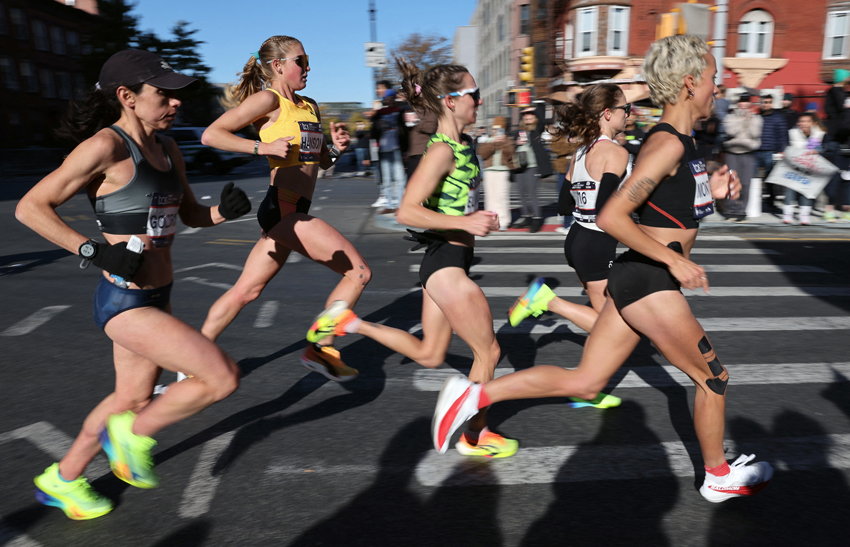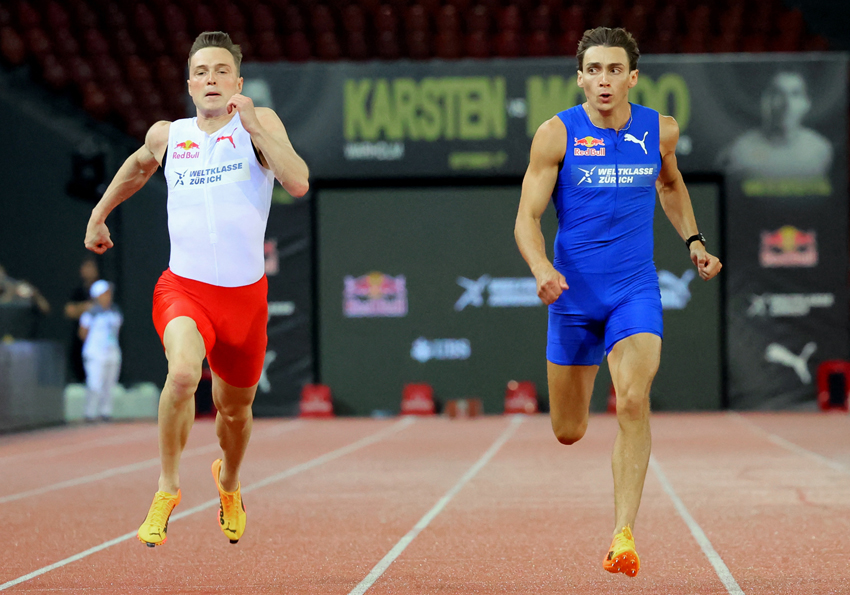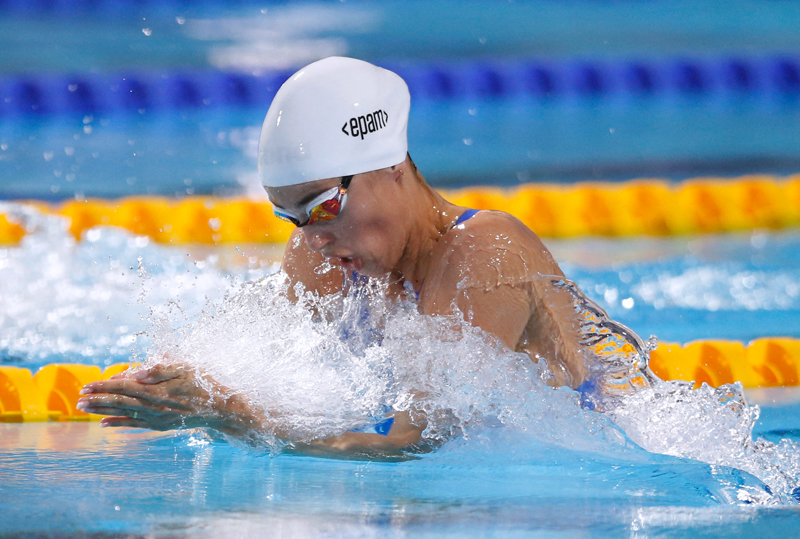Half marathon and 5k run training: performance enhancing workouts that will improve your distance running
These are the 'golden workouts' for success
Writing an article like this one - which outlines the 'best' workouts for various race distances - is a somewhat risky activity. Workouts do not exist in a vacuum, independent of the other things you do during your training. Training sessions complement each other in various ways, and there are simply no 'magical' workouts which transform your fitness to such a great extent that your other forms of training can be eliminated. Nonetheless, there are key training sessions for each important race distance - workouts which have an unusually large impact on your ability to run a particular race. These are sessions which in most cases should be carried out several times before an important competition, and many can be completed on an almost-weekly basis before big races, with outstanding benefits resulting. Below, you'll find a list of 'golden' workouts for two popular race distances - the 5K and half-marathon. Remember that each session requires a thorough warm-up before the intense work is attempted; bear in mind, too, that you'll need to add other workouts - using an intelligent training progression - in order to optimize your strength, power, vVO2max, tlimvVO2max, lactate threshold, and running economy and thus run your best-possible race.5000 metres
1. 'THE SIMULATOR':
Endurance runners have been carrying out this session almost as long as 5-K racing has been around - and for good reason: This simple workout markedly improves confidence, comfort, and efficiency while running a 5K, and it also has a positive impact on vVO2max and lactate-threshold running speed. To carry it out, simply run (3 to 4) x 1600 metres at your current 5-K speed, cool down, and call it a day! Initially, make your recovery intervals equal in time duration to your work intervals, with a five-minute max (i.e., if you are covering your 1600-metre work intervals in 4:30 each, utilize a 4:30 recovery, but if you are running each 1600 in 6:30, recover for only five minutes), but as time goes by you should begin trimming the recoveries in 30- to 60-second increments. For example, if you are an 18:36 5-K person and you are handling 3 x 1600 in six minutes each with five-minute recoveries with relative ease, slim down to four-minute recoveries for your next workout, and - over time - continue the recovery-shortening process until you reach two minutes or so (if you can recover for less than two minutes and still perform the workout, your 5-K fitness is actually greater than your current 5-K time indicates, and you should increase the pace of the work intervals). 30-miles per week runners should attempt about three 1600-metre intervals per workout; individuals who are averaging 40 miles of running per week or more can attempt four 1600-metre intervals per session (or even five if they are very strong and experienced).
2. 'THE GOAL-PACE SESSION':
Generally, if you are beginning your training for a key 5K from a state of good - but not ultra-high - fitness, you can expect to improve your 5-K time by around 50 seconds, i.e., 16 seconds per mile, in a period of about 12 weeks or so. Of course, one way of improving your chances of making this jump is to actually practise this goal pace, instead of hoping that it will magically descend on you during a weekend 5K. Practice makes perfect, or - more accurately - practising a particular speed improves both your neuromuscular efficiency and psychological confidence at that specific rate of working, making it much more likely that you will be able to sustain the pace in an actual race. Since a 50-second per 5000 metre improvement works out to be about four seconds per 400 metres, a good goal-pace workout would simply be (6 to 8) x 800 at a tempo which is eight seconds per 800 metres faster than current 5-K ability. Thus, a 20-minute 5-K person (1:36 per 400 metres or 3:12 per 800 metres) would simply tour the 400m oval twice in around 3:04 to complete one work interval. As with the 'simulator workout' described above, recovery durations can initially be equal in time to the work intervals - but may be trimmed down to about 90 seconds or so over time. If you're a 30-mpw runner, don't try to complete more than six work intervals per workout, at least initially.
A basic and very effective progression for this workout, after recovery intervals have been trimmed, is to expand the work-interval distance to 1000 or even 1200 metres, while maintaining the same goal pace (for example, 6 x 800 could be replaced by 4 x 1200). This increases the specificity and average intensity of the overall session and leads to greater physiological improvements.
3. 'THE EXTENDED RUN':
Endurance runners tend to like this workout a lot - and for good reason: It's simple to carry out and doesn't take too much time, and one can often 'feel' the benefits of performing this session a few days after doing it for the first time. All you need to do is warm up thoroughly and then embark on a hard, 20-minute run (without any breaks, rests, or recoveries) over a favourite training route. As you run, you should feel as though you are competing in a 10-K race. What could be simpler!
This session enhances mental tolerance of the physical duress associated with intense running, and it elevates 'speed-stamina' and confidence. It's great from a purely physiological standpoint, too, as the hard 20-minute effort should have a strong impact on lactate-threshold speed, running economy, and even vVO2max.
Please note, though, that this is not a tempo run, which by definition is an effort carried out at lactate-threshold speed. The extended run must be completed above threshold, which is why we recommend aiming for the perceived effort of a 10-K race (10-K running is usually two- to three-per cent above lactate-threshold velocity). The above-threshold pace produces a greater improvement in lactate threshold, compared with tempo-type running, and is also better for neuromuscular efficiency at race-type speeds. The time duration of 20 minutes helps to ensure that you are not actually putting forth a race-type effort during training (it's best to save your true competitive 'fire' for real race situations), and indeed most runners recover well and quickly from this overall effort. Another nice feature of this extended run is that it is very time-efficient: the entire session, including warm-up and cool-down, can often be completed in about 45 minutes.
4. 'THE 5-K SUPER SETS':
After a very thorough warm-up, run 600 metres at close-to-all-out intensity, and then 'gear down' to current 5-K pace for 1000 metres. That combination (600-1000) constitutes your first super set, and after approximately a four-minute jog recovery (you can abbreviate this over time), you should carry out a similar super set (600-1000), jog for four more minutes, and then close the workout with one final super (600-1000) combo, followed by a cool-down. Elite or functionally very strong athletes (as well as individuals who no longer find three super sets to be challenging) can perform four or five sets per workout. Stay relaxed at all times as you run; don't 'tighten up', and don't change your basic form, no matter how tired you feel.
5. 'THE 5-K CIRCUITS':
Warm up with about 10 minutes of light jogging, followed by some stretching routines and dynamic-mobility exercises. Next, run (4 to 6) x 100 metres at close to top speed, with short recoveries, and then perform the following activities in order. Move quickly from exercise to exercise, but don't perform the exercises themselves overly quickly (don't sacrifice good form just to get them done in a hurry). The idea is to carry out each activity methodically and efficiently - and then almost immediately start on the next exertion.
a) Run 200 metres (or 1/4 mile) at what feels like your 5-K race pace (on a scale from 1-10, your effort should feel like a '9' as you run).
b) Complete 20 squat thrusts with jumps (burpees).
c) Do 15 'side sit-ups' on your left side and then 15 on your right. To complete a side sit-up, lie on your left side with your left leg flexed at the knee and lying under your right leg, which is straight. Let the left side of your upper torso lie relaxed on the ground, and fold your arms over the front of your trunk. Then, slowly raise your torso with a twisting motion so that you end up with your torso upright and perpendicular to the ground, and your chest and face facing forward. Slowly lower your upper torso back to the starting position on the ground (don't let your upper body plummet downward in an uncontrolled manner!) to complete one rep. Complete 15 sit-ups with your left side down and then shift over to the right for 15 more.
d) Perform 20 lunges with each leg. Do each lunge from a six-inch platform or step, so that the forward, lunging foot undergoes an exaggerated downward acceleration.
e) Run 400 metres at what feels like 5-K pace.
f) Do 15 feet-elevated press-ups.
g) Complete 15 one-leg squats with your right leg and then 15 more with your left
h) Perform 30 low-back extensions with a twisting motion (i.e., instead of lifting your upper body straight up as you lie flat on the ground with your belly touching earth, your arms at your sides, and your palms on the ground, lift and twist your upper body to the right during the first rep, lift and twist your torso to the left during the second, to the right during the third, etc. Naturally, you'll need to untwist your upper body each time your trunk moves back toward the ground so that your stomach and chest - not your sides - touch the ground; always do this rhythmically and smoothly, while maintaining good control.
i) Run 400 metres with 5-K alacrity again.
j) Carry out 20 bench dips.
k) Hop on your right foot, covering 20 metres as fast as you can; then do the same on your left foot.
l) Complete 15 high-bench step-ups with each leg.
m) Run 1600 metres at 5-K velocity
n) Repeat steps 2-13 one more time (for two circuits in all), and then cool down with 2 miles of light jogging.
This workout contains 5000 metres of 5-K-pace running, 400 to 600 metres of power running at faster than 5-K speed, and a variety of beneficial strengthening activities. The circuits enhance fatigue resistance, whole-body strength and coordination, running economy, lactate threshold, and vVO2max - not a bad combination of benefits! Many 5-K runners report that once they can run about three miles within the circuits at around current 5-K pace, moving up to a faster pace during 5-K races is relatively easy.
THE HALF-MARATHON
1. 'THE HALF-MARATHON SUPER SET':
After a very thorough warm-up, simply run 2 x (400-1200-3200), with the 400 at close to all-out intensity, the 1200 at about current 10-K speed, and the 3200 at goal half-marathon pace. Remember that this is a super set; you should take no recovery between the 400, 1200, and 3200 within each set. Recover by jogging for five minutes between sets, and cool down at the end with three miles of very relaxed running.
This session boosts lactate-threshold running speed as well as efficiency and confidence at goal half-marathon pace, and it is terrific for heightening your speed-stamina, i.e., your ability to hang in there with a quality running pace even when your muscles are in a rather pronounced state of rebellion.
2. 'THE BILLAT':
As you undoubtedly know by now, this workout consists of 5 x 3 minutes at the best running speed you can sustain for six minutes, with three-minute jog recoveries in between the three-minute work intervals. The session bolsters vVO2max, tlimVO2max, lactate-threshold running speed, and running economy. As an added benefit, it also makes running at half-marathon speed feel like reclining in a soft summer hammock.
3. 'THE HALF-MARATHON CIRCUITS':
Warm up with about 10 minutes of light jogging, followed by some systematic stretching routines and dynamic-mobility exercises. Next, run (4 to 6) x 100 metres at close to top speed, with short recoveries, and then perform the following activities in order. Move quickly from exercise to exercise, but don't perform the exercises themselves overly quickly (don't sacrifice good form just to get them done in a hurry). The idea is to carry out each activity methodically and efficiently - and then almost immediately start on the next exertion.
a) Run one mile at your goal half-marathon velocity.
b) Complete 20 squat thrusts with jumps (burpees).
c) Do 70 ab crunches.
d) Perform 20 lunges with each leg, with your non-lunging foot on a step or platform which is about six inches off the ground.
e) Carry out 70 low-back extensions.
f) Do 20 press-ups.
g) Complete 15 one-leg squats with your right leg and then 15 more with your left
h) Run one mile at goal half-marathon velocity.
i) Carry out 30 bench dips.
j) Complete 15 high-bench step-ups with each leg.
k) Jump 100 times in place, getting your propulsive force from your ankles, not your knees, and carrying out the last 30 jumps at an especially quick tempo (for all 100 jumps, don't try for great height - your feet should only come off the ground a few inches; what you're really looking for is quick reaction with the ground, i.e., minimized ground-contact times).
l) Carry out 30 cross-body leg swings with each leg. To do these, lean slightly forward with your hands on a wall (or other support) and your full body weight on your left leg. Then, swing your right leg to the left in front of your body, pointing your toes upward as your foot reaches its farthest point of motion. After this, swing your right leg back to the right as far as comfortably possible, again pointing your toes up as your foot reaches it final point of movement. Repeat this overall motion 30 times before performing 30 reps with your left leg.
m) Run one mile at goal half-marathon velocity
n) Repeat steps 2-13 one more time (for two circuits in all), and then cool down with two miles of light jogging.
This workout includes five miles of running at goal half-marathon velocity, 400 to 600 metres of running at close to top speed, and an array of highly challenging strengthening activities. The circuits enhance fatigue resistance, coordination, whole-body strength, running economy, and lactate threshold, and they also enable you to 'fall into your half-marathon pace', i.e., run at half-marathon speed almost automatically - and no matter how tired you feel. The latter is not a bad asset to possess in the late stages of a half-marathon race.
4. 'THE RED-HOT 10-K RACE':
To perform this workout, simply compete as well as you can in a 10-K race! If you can run a 10K at a pace which is 16 seconds per mile faster than your goal half-marathon speed, then you are usually ready to complete your half-marathon at your hoped-for velocity. It's also nice to know that 10-K racing boosts lactate threshold, running economy, and VO2max - and lowers the perceived effort associated with half-marathon racing. If possible, try to choose a 10-K course which somewhat resembles your half-marathon route; if the half-marathon is hilly, for example, choose a 10-K race with plenty of challenging inclines.
5. 'THE STANDARD':
Simply run five miles at an easy pace to induce some muscle fatigue, and then reel off six or seven miles at your goal half-marathon tempo, before cooling down with an easy mile or two. This workout helps you operate at half-marathon intensity when you are tired and improves your running economy at half-marathon speed, and it is a great confidence-builder before your big race.
Owen Anderson
You need to be logged in to continue reading.
Please register for limited access or take a 30-day risk-free trial of Sports Performance Bulletin to experience the full benefits of a subscription. TAKE A RISK-FREE TRIAL
TAKE A RISK-FREE TRIAL
Newsletter Sign Up
Testimonials
Dr. Alexandra Fandetti-Robin, Back & Body Chiropractic
Elspeth Cowell MSCh DpodM SRCh HCPC reg
William Hunter, Nuffield Health
Newsletter Sign Up
Coaches Testimonials
Dr. Alexandra Fandetti-Robin, Back & Body Chiropractic
Elspeth Cowell MSCh DpodM SRCh HCPC reg
William Hunter, Nuffield Health
Keep up with latest sports science research and apply it to maximize performance
Today you have the chance to join a group of athletes, and sports coaches/trainers who all have something special in common...
They use the latest research to improve performance for themselves and their clients - both athletes and sports teams - with help from global specialists in the fields of sports science, sports medicine and sports psychology.
They do this by reading Sports Performance Bulletin, an easy-to-digest but serious-minded journal dedicated to high performance sports. SPB offers a wealth of information and insight into the latest research, in an easily-accessible and understood format, along with a wealth of practical recommendations.
*includes 3 coaching manuals
Get Inspired
All the latest techniques and approaches
Sports Performance Bulletin helps dedicated endurance athletes improve their performance. Sense-checking the latest sports science research, and sourcing evidence and case studies to support findings, Sports Performance Bulletin turns proven insights into easily digestible practical advice. Supporting athletes, coaches and professionals who wish to ensure their guidance and programmes are kept right up to date and based on credible science.









